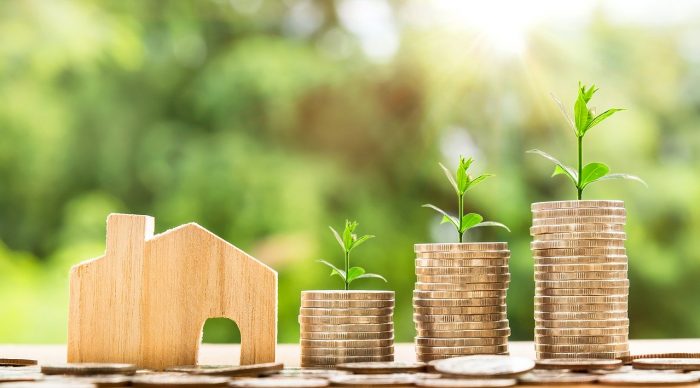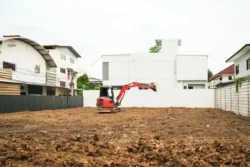Australian commercial property markets: Review of 2020
Published
December 14, 2020
Published
December 14, 2020

Back in March 2020, none of us would’ve expected that the year ahead would be the most unprecedented of our time. A year where all plans and forecasts went out the door, and a new world was set in front of us without introduction. In the early months of the pandemic, goal posts shifted each day, and the certainty that commercial real estate investment typically provides was called into question.
That said, while COVID-19 exposed the volatility and weakness of many investments, the coronavirus showed why commercial real estate is one of the most popular investments for Australians.
Truly, we did not witness the type of catastrophe in Australia’s property markets that – on paper – we perhaps could have. Australia’s worst recession since 1939 caught commercial property markets off-guard, but values did not plummet and distressed sales were few.
Here is a high-level review of Australia’s commercial property markets in 2020.
New commercial leasing rules ensured landlords and tenants actually talked

Commercial property investors took out breathholding records earlier in the year, as COVID-19 had a big impact on commercial leases.
The COVID-19 Commercial Leasing Code of Conduct, announced on 7 April 2020, attempted to provide order between tenants and landlords, introducing such conditions as:
- Landlords cannot terminate the lease if rent is unpaid during the COVID-19 pandemic period.
- Landlords must offer rental waivers and deferrals for 100 per cent of the ordinary amount payable.
- Landlords cannot escalate rent for the duration of the COVID-19 period.
Landlords with established tenant relationships avoided panic (for the most part). But those without that connection were forced to create an affinity with their tenants in the harshest environment seen in decades.
The new Code reminded all commercial property owners and investors of the importance of creating and holding a strong relationship with their tenants.
Transactions plummeted, but no distressed sales

Australian commercial property transactions were 58 per cent down in the first nine months of the year to just under $11 billion. Vendors and buyers paused their investment and divestment decisions while the dust came and went from COVID-19.
Considering all that’s happened in 2020, and all the business closures and capital losses, some will see the small number of transactions as a positive for the commercial property market.
Little divestment during a time of uncertainty? While the media claimed commercial property was the ‘“collateral damage” of the health crisis’? How about virtually no distressed sales throughout 2020?
Businesses suffered, and many closed their doors. However, commercial property owners were not forced to ‘firesell’ their assets.
2021 may show a different story, with some smaller investors buckling under the pressure of accumulating interest and lack of government support. Larger unlisted property trusts won’t have that problem. But for now, it’s incredible to see the resilience commercial property has had in a year fraught with challenges.
Logistics property proved an investment winner

The most popular commercial property investment in 2020 was by far industrial real estate, specifically logistics.
The logistics property sector can thank the eCommerce-driven warehouse space demand, with more Australians online shopping than ever before.
Colliers International recorded $3.57 billion of industrial transactions in the first nine months of 2020, up 5.6 per cent year-on-year.
There is still a gap to be filled between supply and demand. Additional assets are expected to be brought online in 2021 to fix the mismatch between available industrial property and the volume of investment capital looking for a home.
2020 saw the first time in almost a decade that industrial property deal volumes outperformed those of office investments.
A report by Cushman & Wakefield, recorded $2.24 billion of industrial transactions in the three months to September 2020, while quarterly investment into the Australian office market totalled $2.12 billion.
This is more of a function of strength in the industrial property market, given the extreme reliance of logistics companies during an eCommerce-favoured pandemic, and less a weakness in (or lack of desire for) office investment.
Physical office space remains relevant
Despite the relevance of physical office space being brought into question by some pundits, a recent survey by the Property Council of Australia (PCA) showed Australian office owners and occupiers see office space as more relevant than ever. Team culture depends on a centralised office location, and the figures support their claims.
Of the respondents in PCA’s survey, 96 per cent see the role of physical office space as key to creating a corporate culture. Many landlords and white-collar tenants say the physical office environment is a crucial driver of job satisfaction, productivity, and collaboration.

More good news on the office property front: Technology companies moving around the country are producing a flight to quality in particular office precincts. Co-working spaces are along for the ride too. With the rising population of start-ups and self-made entrepreneurs, the demand for co-working office spaces and office premises for technology companies remains at historic levels.
Melbourne eCommerce exploded (so, too did industrial logistics)
Melbourne held Australia’s attention during the later months of 2020, with the key Australian city going into a second lockdown.
The lockdown marred commercial property market forecasts from earlier in the year, as VIC businesses shut up shop for the zero foot traffic seen across the state. At least, that’s what we were led to believe.
According to Australia Post, Victoria drove the biggest month in Australia’s eCommerce history in August 2020. Online spending was up 8.9 per cent higher than 2019’s Christmas period and 5.8 per cent higher than its previous peak in April 2020.
The digital shoppers lean on fast and reliable delivery for their online purchases, meaning demand for industrial logistics in Melbourne catapulted. Industrial logistics investment has arguably become the most popular investment in Australia, and – given its sparse population and rapid eCommerce adoption – has put Melbourne on the map as the epicentre of great commercial property opportunities.

Australian economic rebounded quicker than expected
Australia has already returned to positive GDP growth after two quarters in the red.
The latest GDP figures, released at the beginning of December, show the economy’s first period of growth in 2020, with 3.3 per cent GDP growth in the September 2020 quarter.
The government expected overall GDP to contract 5.4 per cent – the worst negative quarter in history – and were clearly (and pleasantly) surprised to see the unexpected growth.
The RBA left its record-low 0.10 per cent cash rate on hold, citing “better than expected” economic conditions as the reason for doing so.
An unprecedented year was met with expected responses: Many kept investment capital pocketed, while those unconvinced by news headlines soldiered on to find opportunities where others weren’t looking.
With a bizarre year in the wings, there’s a lot to say Australia’s economic headwinds could make for an exciting 2021 for commercial property investors.
Will you sit on the sidelines for another year?
Subscribe for expert property insights
Do yourself a favour and subscribe with over 3,000 investors to receive our regular email updates. We don’t spam. We just provide you with expert commercial property tips based on decades of successful investing.






